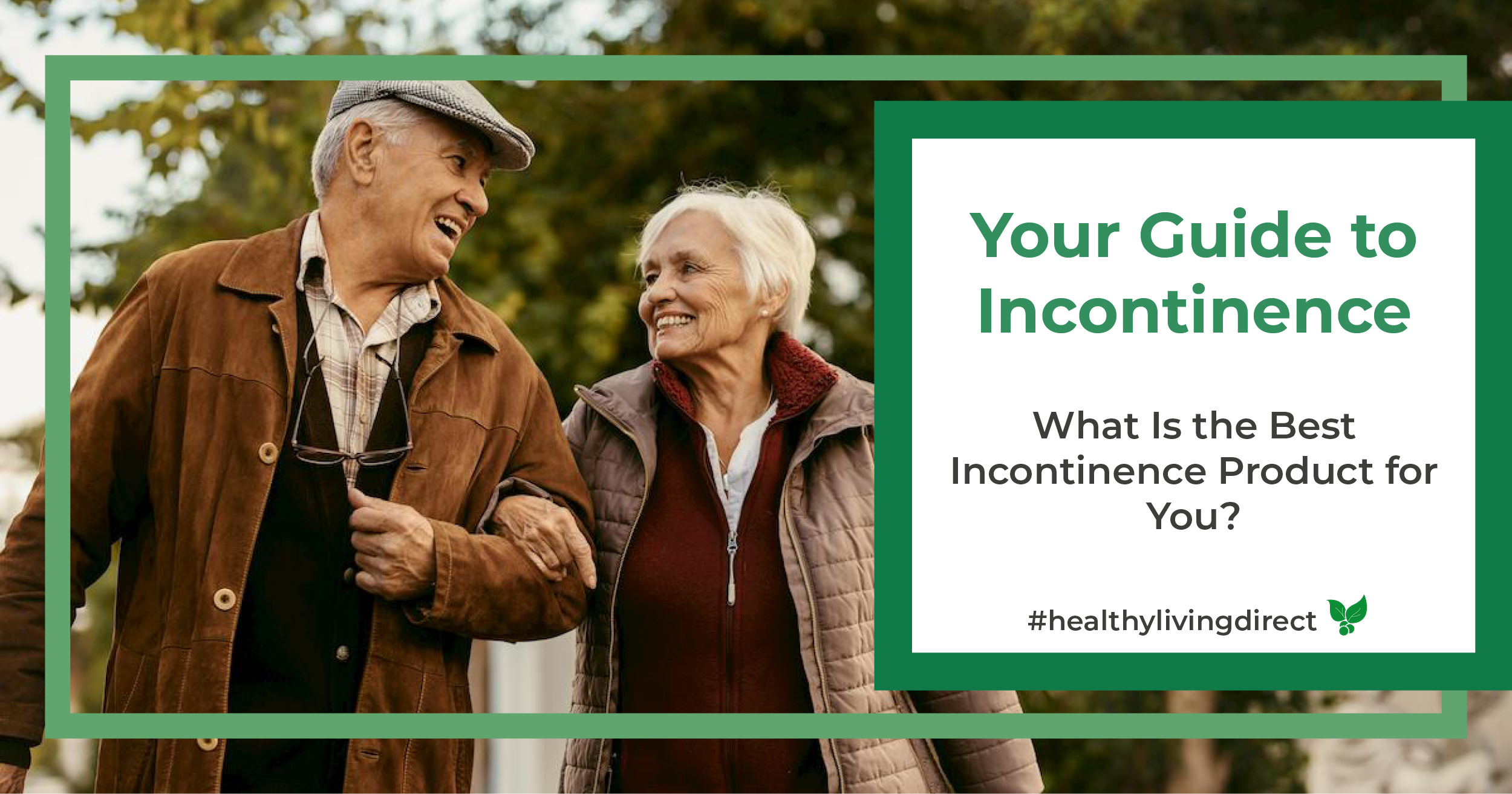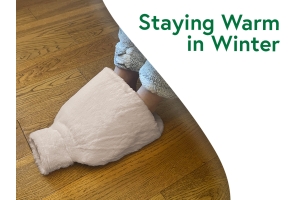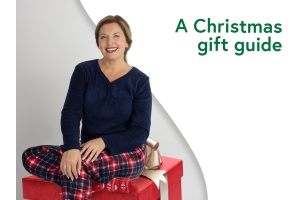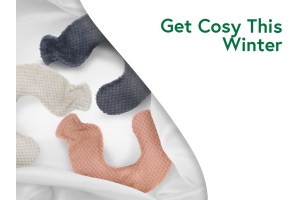Buying Guide to Incontinence Products UK - What Is the Best Incontinence Product for You?

Incontinence is a common affliction which is estimated to impact between 3 to 5 million people in the UK. However, despite it being such a prevalent issue, it is not often discussed and there can still be some stigma attached to it. This means many people living with this problem may have had their confidence knocked, but there should be no shame in living with this issue.
We hope this article will assist you in making an informed decision about which product is best suited to your needs. With the right product, you can find confidence and feel dry and comfortable in your daily routine.
What is incontinence?
Incontinence is the involuntary passing of urine from the bladder (urinary incontinence) or movement from the bowel (bowel incontinence). There are varying levels of incontinence, ranging from light to moderate to heavy or severe. The two most common types of urinary incontinence are stress incontinence and urge incontinence.
Stress incontinence occurs when urine leaks from the bladder due to sudden pressure – such as when you cough, laugh, sneeze, exercise or lift something heavy. Usually, the amount of urine that passes is small but sometimes larger amounts can be passed – especially if you have a very full bladder.
Urge incontinence occurs when you have a sudden and intense need to pass urine and you cannot delay going to the toilet. This can be caused by a problem in your bladder muscles, which may not be squeezing (contracting) and relaxing at the right time.
If this sounds familiar and you believe you may have any form of incontinence, you must make an appointment with your doctor.
What is the best incontinence product for you?
Incontinence can cause a lot of anxiety, especially when plans come up or you know you will be out for the entire day. That’s why it is essential to find the best incontinence product for your needs. Whether you need support, protection or discretion, there’s something for you.
When it comes to finding the best incontinence product for you, there are some factors you need to consider. Absorbency is the first thing you need to get right. Do you have light, moderate or heavy incontinence? Is it urinary only, faecal, or is there a concern of voiding your bowel or bladder? Some products have a range of absorbency, and this may change how bulky the item is and its discretion value.
Another factor to consider is sizing. If you opt for pull-ups or All-in-Ones, sizing is important. If a size is too large, it may not be able to contain leaks effectively, whereas a size too small can be uncomfortable. Finding the right size can make you feel more comfortable and confident throughout the day.
List of products, select one to read more:
Pads
Pads are a popular choice for people living with incontinence issues. Incontinence pads are made from an absorbent material which means they soak up fluid from leaks that may occur.
How often do incontinence pads need changing?
Generally, incontinence pads need changing every 3-4 hours. This depends on the type of pad that you are wearing and your level of comfort. If you feel uncomfortable before 4 hours, you should change when you can do so.
Pads with a higher level of absorbency may have a ‘wetness indicator’ which will show if the pad needs changing soon. Incontinence pads that are specially for night-time wearing are designed to be worn for longer periods.
Pros
Incontinence pads provide a discreet option for people who are living with urinary incontinence. They come in a range of sizes, from liners and thinner discreet pads to thicker, larger pads.
There are a variety of brands to choose from, so if one brand doesn’t suit your needs, try another before deciding whether pads are right for you. On top of this, there is a range of different absorbency levels to suit your personal needs.
Cons
Pads are single-use and disposable items meaning they will be an expenditure that needs to be budgeted for. New packs of pads will have to be bought frequently – depending on how often they are needed.
Additionally, incontinence pads are not very sustainable. As a single-use item, they must be disposed of after every use. This means that the pads are likely to end up in landfill and take a long time to decompose. If they are not disposed of correctly, they can end up in places they should never be – like the ocean for example.
Return to the list of products.
Reusable Briefs/Boxers
Reusable incontinence briefs and boxers are a form of underwear with a washable pad fitted into the fabric. The pad can be washed and reused so you can get multiple wears from one pair. As this product is a form of underwear, they fit like a ‘regular’ item of clothing which can help bring some normalcy to your daily life.
Pros
As incontinence briefs and boxers are created similarly to underwear, users may feel more comfortable wearing them. They are less intrusive than other products and, especially for men, having the option of incontinence boxers and briefs can make the user feel more at ease.
As the reusable pad is ‘built-in’ to the brief/boxer, this product provides a great level of discretion that many people look for in their incontinence products. Moreover, the user doesn’t have to carry pads or pull-ups around with them if they go out for the day.
Although incontinence underwear comes with built-in protection, you can wear a pad inside if you want an additional layer of security. Having this option can be a bonus if your incontinence ranges between light and moderate.
A big benefit of incontinence briefs and boxers is their reusability. Unlike pads which are single-use and disposable, you can put wash your briefs and boxers after one use and then wear them again. It is important to ensure your incontinence underwear has dried completely and thoroughly before storing them or wearing them again.
Cons
If you have heavier incontinence, or if you are prone to voiding your bladder or bowel (this is when your bladder or bowel is completely emptied due to incontinence), washable incontinence briefs will not provide enough absorption or protection.
Return to the list of products.
Pull-Up Pants
Pull-up pants use a nappy-style design which replaces ordinary underwear to provide support with incontinence. They are usually made with an elasticated material so you can pull them up like you would with your regular underwear. This product is single-use and should be disposed of after use.
Pros
Pull-up pants have a higher absorbency than products like reusable pants, which makes it ideal for people with heavy urinal incontinence or faecal incontinence.
Pull-up pants often have a ‘hydrophobic’ layer which pulls urine away from your skin. This can help prevent skin irritation and dermatitis, but it is important to change the product soon after it becomes wet.
Once you have found the right size and absorbency, pull-up pants are convenient for going about your day. With the right size, you can put them on and your worry less about leaks. In addition to this, they also feature anti-odour technology so you can feel confident around others.
Cons
Pull-up pants can be difficult to put on and remove if you are living with mobility problems. If you know an elderly person living independently or if you are a carer, All-in-Ones may be a better product because of their adhesive fastenings.
As these are a single-use product, you may need to carry some spare pull-up pants with you. This is so you can change throughout the day and reduce the risk of poor hygiene and odours. This also means that they are less cost-effective than reusable products.
Return to the list of products.
All-in-Ones
All-in-Ones are shaped similarly to pants and ordinary underwear but they use fastens to close around your body. There are two main varieties, belted and slips. Belted All-in-Ones use nappy style design with a belt to tighten around your body to keep it up. Slips use adhesive tape to secure them in place.
Pros
If you struggle with mobility issues, All-in-Ones are a great alternative to other incontinence products. The adhesive fastens make this product easy to put on and take off, without having to pull the product over your legs. This is also helpful for carers of people who are immobile.
They can hold more for people with heavier urinary incontinence and some come with leg cuffs to help prevent leakage. Many All-in-Ones have odour control which can help people feel more comfortable when they are around other people.
Cons
If you lead quite an active lifestyle, it may be more convenient to try something like pull-up pants. These are used in place of normal underwear so you can just put them on and go. If you have light incontinence, pads or incontinence briefs could be a better choice. These are discreet and simple so you can go about your day.
Return to the list of products.
Washable Mattress Protector
Mattress protectors are an affordable way to keep your mattresses clean if you are living with incontinence issues. Most mattress protectors are machine washable which means they are easy to wash and a cheap way to safeguard expensive mattresses through the night.
Pros
Washable mattress protectors can come in a great range of sizes, from single beds to king-sized, so you’re sure to find a mattress protector that fits your needs.
They can also come in a variety of styles. Quilted mattress protectors provide an extra layer of padding to provide additional comfort and ensure you stay protected without sacrificing a good night’s sleep.
Most importantly, as stated before, washable mattress protectors provide an easy option for keeping your mattress clean. They are easy to fit, waterproof, machine washable and an affordable option for most.
Cons
One kind of mattress protector is a plastic-lined sheet. While it is waterproof and a decent choice for someone living with incontinence, it can be uncomfortable to sleep on through the night. The plastic may feel odd or make noise if you move or shuffle through the night.
Some sheets may not provide enough protection for those with heavier incontinence. If you have heavy incontinence issues, it is best practice to use pads, pull-ups or All-in-Ones in conjunction with mattress protectors for complete protection.
Return to the list of products.
Portable Loo
If you have ever been caught out needing the loo without a toilet anywhere nearby, you can understand the frustration and desperation of needing to go urgently. This happens all the time when people travel long distances without a service station anywhere nearby.
A portable loo provides a solution to this problem. These act as small portable containers with tightly sealed caps. Once it has been used, the contents can be easily emptied into a toilet.
Pros
Portable urinals are a convenient option for people with incontinence issues, especially for travelling long distances. The urinals are specially designed to fit the shape of the user, making it more secure. There are options available for both men and women.
Cons
Portable loos must be stored properly and cleaned thoroughly. Although this option is normally secure, some leaks can occur. This may happen if the urinal doesn’t fit properly or if the cap has not been secured properly.
If there are no toilets available near you, chances are there won’t be any sinks nearby for you to wash your hands. If you are travelling, make sure you take some hand sanitiser or soap and spare water to clean yourself. You can also take a roll of toilet tissue paper or wet wipes.
Return to the list of products.
Incontinence products and hygiene
With all incontinence products, remember to change them before they become too wet. Not changing can result in poor skin hygiene and bad odours. Make sure you take care of your skin as too much contact with liquid can cause dermatitis and other skin irritations.





